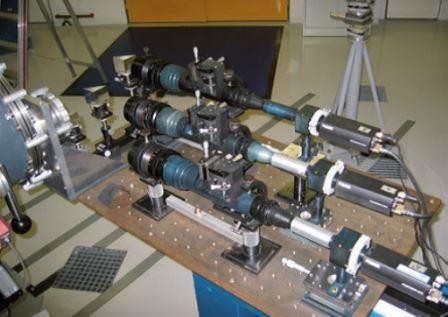
Access Success Stories
Ever since the beginning of LASERLAB-EUROPE, one of its most important features has been the Transnational Access Programme. Up to now, about 1,200 scientists from institutions outside LASERLAB-EUROPE had access to LASERLAB facilities to perform their experiments. Proposals for Transnational Access are reviewed by an external and independent Access Selection Panel on the basis of scientific merit. Access to LASERLAB facilities is free of charge; travel and accommodation expenses of visits with a typical duration of two to six weeks are covered by the Programme.
Each access project has its unique history and benefits. In many cases, the host researchers are not only involved in assisting their guests, but form an integral part of the research project. As a result, the host institutions benefit directly from the programme. Through the years, many long-term research collaborations have been formed as a result of Transnational Access. On the following pages, we highlight a few particularly successful access projects. Tom Jeltes
Plasma interferometry diagnostic studies (PALS)
One of the longest-running and most productive access related collaborations is situated at the Prague Asterix Laser System (PALS). Starting more than a decade ago, Tadeusz Pisarczyk from the Institute of Plasma Physics and Laser Microfusion (IPPLM, Warsaw, Poland) has used his multi-frame laser interferometry system to study plasmas in numerous experiments at PALS. For this purpose, he developed a modular optical system which allows quick assembly of the interferometer, depending on the experimental requirements. Several other researchers have since used the Polish system, benefiting from PALS facilities and Pisarczyk’s expertise.
The idea of constructing multi-frame interferometric diagnostics has its origin in Pisarczyk’s first LASERLAB Access project at PALS, some ten years ago. In this experiment he adapted an automated single-frame polaro-interferometer to study plasma parameters. The experience gained during the installation of this system and the results obtained turned out to be sufficiently useful and convincing to encourage extension of this method to a multi-frame approach. This led to the construction of an interferometric system with the capability to record three independent interferometric images with an adjustable time delay in the range of 1-3 nanoseconds. Each channel was equipped with a high-resolution, high dynamic range CCD camera. All cameras were connected to a computer, which allowed for easy control of the data acquisition process and maximally automated the work required to process the recorded data. The successful implementation of a three-frame interferometer on PALS was expensive and included a great deal of complex technical work, and would not have been possible without strong support from the management of both PALS and IPPLM. The reason for this was that the components of this system had to be installed in the experimental chamber in such a way that they would not obstruct access to the chamber and could be used in parallel with other important diagnostic tools. For example, to this end a unique custom-designed lead-out of the diagnostic laser beams from the experimental chamber for different recording channels had to be constructed, using a system of prisms mounted on the window in the chamber door; when the door was opened, the prisms were removed, providing an unobstructed access to the chamber. Furthermore, the main subsystems of the interferometer (e.g., the delay line and the recording system) were designed as independent modules, with permanently mounted components, which allows for a quick assembly and disassembly of the interferometer, depending on the experimental requirements. Over the time sufficient experience was gained with the multi-frame interferometer for it to become a routine diagnostic tool, which had the advantage that it could also be used for training of undergraduate and postgraduate students. Presently two students – one Czech and the other from Pisarczyk’s Polish team – are working on PhD theses which rely on the multi-frame interferometry as a basic source of information on the parameters of the laser plasma.



















































































